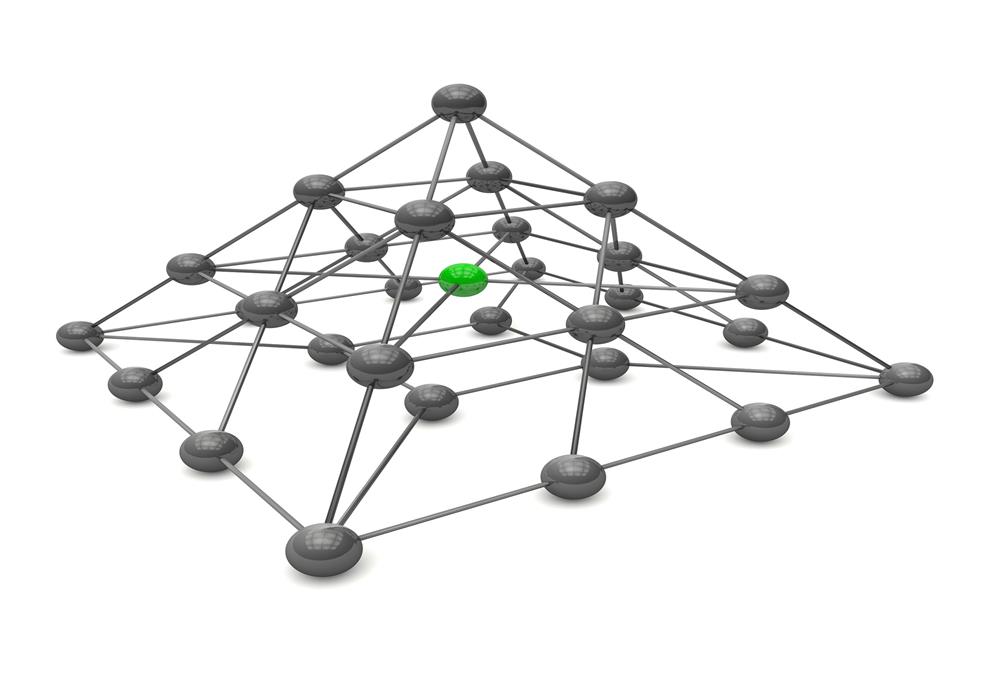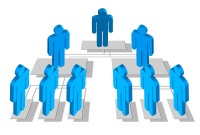- Home
- Business Processes
- Industry Knowledge
- Aerospace Industry
- Automotive Industry
- Banking Domain
- BFSI Industry
- Consumer/ FMCG Industry
- Chemicals Industry
- Engineering & Construction
- Energy Industry
- Education Domain
- Finance Domain
- Hospitality Domain
- Healthcare Industry
- Insurance Domain
- Retail Industry
- Travel and Tourism Domain
- Telecom Industry
- Leadership Skills
- eLearning
- Home
- Business Processes
- General Ledger (Record to Report)
- Network Organizational Structures
Network Organizational Structures
The newest, and most divergent, team structure is commonly known as a Network Structure (also called "lean" structure) has central, core functions that operate the strategic business. It outsources or subcontracts non-core functions. When an organization needs to control other organizations or agencies whose participation is essential to the success, a network structure is organized.
The newest, and most divergent, team structure is commonly known as a Network Structure (also called "lean" structure) has central, core functions that operate the strategic business. It outsources or subcontracts non-core functions. When an organization needs to control other organizations or agencies whose participation is essential to the success, a network structure is organized. In this, the main organization creates a network of relevant agencies and it influences in different ways.
A network structure has little bureaucracy and features decentralized decision making. This structure is very flexible, and it can adapt to new market challenges almost immediately. Flexibility is one of the main reasons why firms pursue network organizational structure in the first place. This allows them to change its production techniques, quantity, products’ designs or stop the production completely without facing any major problems.
Such an organization works like an advanced computer network where many autonomous organizational units interact with each other and the external world to deliver outcomes. Goals and strategy is set by central management but there involvement is limited to building on the capabilities of network units and monitoring progress. Network structure is widely used in non-business organizations which have sociopolitical objectives.
For instance, the National Industrial Development Corporation assigned with the task of rapid industrial development in the country may resort to a network structure in their objective to build an industrial estate. They will act as the lead agency and involve the various other agencies like Electricity Boards, Municipal Authorities, Land Development Authorities, Authorities for Water & Sewage Control, Department for communication facilities etc. They will also need to establish a network with people who would ultimately be using the industrial estate. It would also use the services of an advertising agency to promote the industrial estate and attract maximum number of entrepreneurs. For the construction of sheds and factories they may have to utilize the services of private construction agencies. Thus, a network structure envisages the utilization of a number of different services offered by different agencies. There is need to coordinate the different inputs and synchronize them towards the ultimate objective.
A network structure is meant to promote communication and the free flow of information between different parts of the organization as needed. Managers coordinate and control relations both internal and external to the firm. A social structure of interactions is fostered to build and manage formal and informal relationships. The goal of this structure is to achieve rapid organizational evolution and adaptation to constantly changing external and internal environments. But there's an almost inevitable loss of control due to its dependence on third parties, and all the potential problems that come from managing outsourced or subcontracted teams.
An organization that has been using network structure is H&M (Hennes & Mauritz), a very popular brand that has followers world over. H&M has outsourced the production and processing of their goods to different countries majorly Asian and South East Asian countries. H&M is the core company in its case. As it can be seen, the core company distributes its functions to different companies which, in this case, are present in different countries: product development company in Australia, Call center company in New Zealand, the Accounting company in Australia, Distribution company in Singapore and Manufacturing company in Malaysia.
Related Links
You May Also Like
-
Functional Organizational Structures
A functional organizational structure is a structure that consists of activities such as coordination, supervision and task allocation. The organizational structure determines how the organization performs or operates. The term organizational structure refers to how the people in an organization are grouped and to whom they report.
-
There are two commonly used methods of accounting - Cash Basis and the Accruals Basis. Understand the difference between accruals and reversals. Recap the earlier discussion we had on accruals and reversals and see the comparison between these two different but related accounting concepts. Understand how the action of accruing results in reversals subsequently in the accounting cycle.
-
Legal Structures in Businesses
Businesses not only vary in size and industry but also in their ownership. Most businesses evolve from being owned by just one person to a small group of people and eventually being managed by a large numbers of shareholders. Different ownership structures overlap with different legal forms that a business can take. A business’s legal and ownership structure determines many of its legal responsibilities.
-
The sole trader organization (also called proprietorship) is the oldest form of organization and the most common form of organization for small businesses even today. In a proprietorship the enterprise is owned and controlled only by one person. This form is one of the most popular forms because of the advantages it offers. It is the simplest and easiest to form.
-
Matrix Organizational Structures
In recent times the two types of organization structures which have evolved are the matrix organization and the network organization. Rigid departmentalization is being complemented by the use of teams that cross over traditional departmental lines.
-
Different Types of Organizational Structures
Modern business organizations run multiple product and service lines, operate globally, leverage large number of registered legal entities, and operate through complex matrix relationships. To stay competitive in the current global business environment, they must often develop highly diverse and complex organizational structures that cross international borders.
-
GL - Accrued / Unbilled Revenue
Accrued revenues (also called accrued assets) are revenues already earned but not yet paid by the customer or posted to the general ledger. Understand what we mean by the terms accrued revenue, accrued assets, and unbilled revenue. Explore the business conditions that require recognition of accrued revenue in the books of accounts and some industries where this practice is prevalent.
-
An account inquiry is a review of any type of financial account, whether it be a depository account or a credit account. In this tutorial, you learn what we mean by drill through functionality in the context of the general ledger system. We will explain the concept of drill-down and how it enables users to perform account and transaction inquiry at a granular level and the benefits of using this functionality.
-
Understand what we mean by GAAP to STAT adjustments. This article discusses the different standards that are used for multiple representations of the financial results for global organizations. Understand the meaning of US GAAP, Local GAAP, STAT, IFRS, and STAT. Finally, understand why accounting differences arise and how they are adjusted for different financial representations.
-
When the quantum of business is expected to be moderate and the entrepreneur desires that the risk involved in the operation be shared, he or she may prefer a partnership. A partnership comes into existence when two or more persons agree to share the profits of a business, which they run together.
Explore Our Free Training Articles or
Sign Up to Start With Our eLearning Courses

About Us
Learning
© 2023 TechnoFunc, All Rights Reserved











